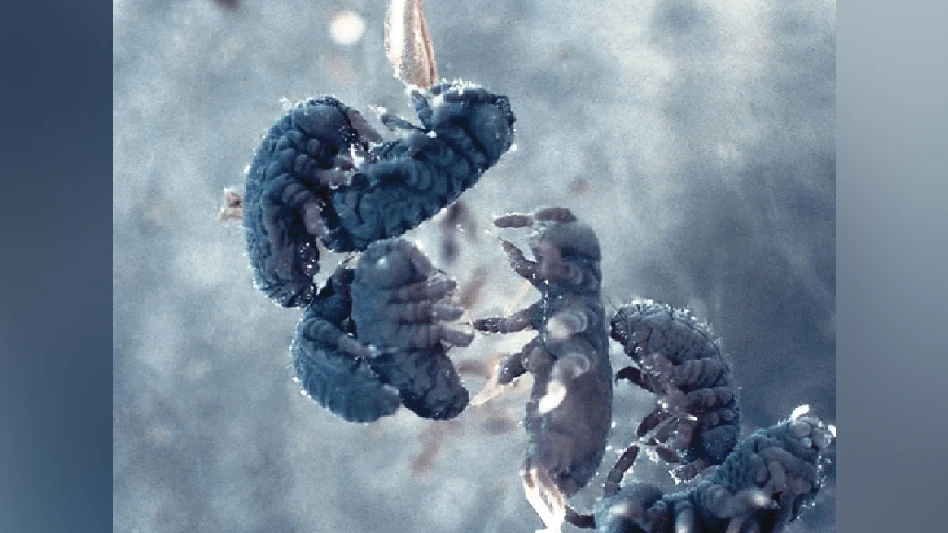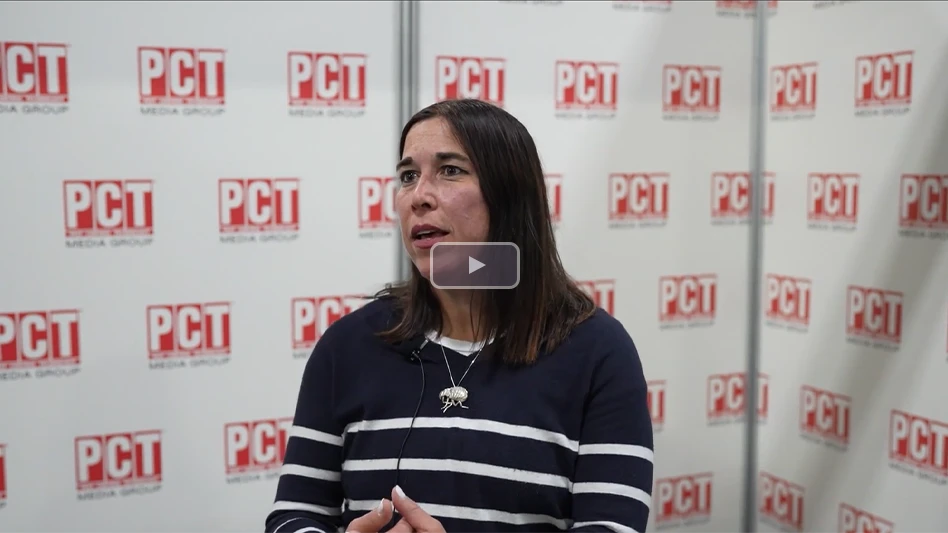Bed bugs are among the most distasteful of pests. When people suspect the wee creepy-crawlies might be invading their homes or offices or the hotels they frequent, they want them out…now! This aversion, coupled with the tremendous resurgence of bed bugs, spells a potentially colossal revenue stream for pest control specialists.
Noted research entomologist Jeffrey White of BedBug Central and Cooper Pest Solutions, a Lawrenceville, N.J.-based operation specializing in bed bug, termite and general pest control, shared insights into developing an effective bed bug program at the recent North American Bed Bug Summit in Chicago.
Choosing Your Model. One of the big questions your pest management firm needs to answer as you embark upon a program is whether you will form specialized bed bug teams or simply schedule bed bug work with your general technicians.
The advantages of the team approach are that the technicians quickly acquire expertise and streamline their processes, and that you avoid the challenges associated with adding bed bug gear to your already equipment-laden trucks.
Pluses to the route technician model are ease of scheduling and reduced physical wear and tear on the technicians.
While the team model may enable your company to provide higher-quality service, the route technician model may increase your efficiency and profitability. "Both models are seeing success in the field," said White. "Weigh the pros and cons, and see which option makes the most sense for your operation."
Selecting Technicians. Which of your team members will make the best bed bug technicians? According to White, you should look for someone who:
• Can follow protocol. Your process needs to be followed consistently every time, so you need someone who can provide a high level of standardized service.
• Can think on his/her feet. Your technician needs to be able to assess a situation and identify unique trouble spots.
• Can handle the physical strain. Picking up mattresses and moving furniture around day after day is strenuous.
• Enjoys the work. Bed bug work is demanding and repetitive. If the technician doesn’t like doing it, he/she isn’t likely to be good at it.
• Can stay on schedule. It’s easy to get bogged down trying to solve every problem on a job, but staying on schedule is important to profitability.
Cultivating Managers. Since bed bugs have only made a comeback in the past five years or so, bed bug technicians have as much — often more — experience with the pests as their managers do. So when the technicians run into a challenging situation, their manager can only provide so much guidance. It is critical for managers to go out on bed bug calls regularly, administering treatments and learning the nuances of the business.
Developing the Protocol. Establishing a protocol is vital to your program’s success. "Bed bug work is methodical," White said. "Try skipping any of the necessary steps, and you’ll see how fast a bud bug service can fall apart. In nine out of 10 jobs, you won’t see a bug in the dresser, but you have to check every dresser for that one in 10."
Cooper’s protocol is 26 pages long, and while White admitted that not everyone needs to go to such lengths, every company does need a written list of steps technicians need to follow to provide effective service.
What constitutes effective service? It depends on your customer, said White, pointing out that there are situations where eliminating the pest problem simply isn’t feasible from a budgetary standpoint. You should have a control protocol in place in addition to your elimination protocol.
How to charge? White’s rule of thumb is to estimate the amount of time the work will take and then get the per-hour, per-technician rate you need to be profitable. Then monitor your actual hours to ensure your estimates are accurate. It’s easy to get involved in time-consuming activities — waiting for tenants to leave their units, for example — that will quickly drain your profitability.
What preparations? Many companies ask tenants to strip their beds, empty dressers and closets, stand their beds up, move the furniture from the walls, etc. Cooper Pest Solutions believes otherwise.
"We like to assess the situation first, and then ask tenants to do only what’s necessary," White explained. Why? Most of the extensive preps are created to address bugs that "might" be in the closet, for example, when in actuality, you only see bed bugs there perhaps 10 percent of the time, he said. "We get better results from asking tenants to just clean up their home — give us enough space to move around and do our job."
What tools should you use? The final step in developing your program is deciding how to treat the infestations. Tools include the following:
Vacuums. Vacuums eliminate a lot of bugs quickly. Just be aware that they aren’t good at pulling bugs or eggs out of cracks and crevices.
Contact kill. Steam penetrates well, even getting into sofa folds, and kills both bugs and eggs. White said that steaming should take only five to 10 minutes per apartment, as you apply steam to a two-foot radius around concentrations of bugs and eggs.
Cryonite eliminates bugs and eggs by freezing them. And because it introduces less moisture than steaming, Cryonite is especially effective in offices, where electrical equipment can be an issue.
Some all-natural sprays are available for contact kill, but White warned that most of these kill bugs only — not eggs.
Encasements. Mattress encasements can effectively treat and prevent infestations. Make sure that the manufacturer backs its claims with research, because not all encasements are created equal. Also, watch out for sharp bed frame edges, because the smallest tear can allow the bugs to escape.
Interceptors. Devices such as ClimbUp interceptors stop bugs as they travel to and from the bed and can help you assess the infestation.
Chemical Pesticides. "We train our technicians to think of liquid residuals as contact kill agents, because once those pesticides dry, they may have little or no effect on bed bugs," said White.
What chemicals are technicians using? Dusts and pyrethroids, for the most part. "Dusts are a must," White asserted. "A lot of pest control experts consider them the No. 1 pesticide for bed bugs." Pyrethroids, nerve toxins, are sometimes combined to improve their effectiveness, but the jury is still out on whether incorporating multiple pyrethroids actually improves your program.
Treating Hotels and Offices. Hotels and offices present unique situations. In hotels, bed bugs are fairly predictable. You know where to look for them, and you have the option of removing headboards and pieces of furniture if they become overinfested. Also, clutter is not an issue.
The negatives? Tenants occupy the space for shorter time periods, so identifying the problem can be difficult. Many times, travelers carry the bugs home before realizing there is an issue. Once the problem is uncovered, the room must be vacated for treatment. "We set a monitor and recommend that hotels wait seven to 10 days for any eggs to hatch," White said. "Most hotels want nothing to do with that; they need to fill their rooms. If that’s the case, make sure they sign a waiver that says they may be exposing their guests to bed bugs."
Offices can be tricky. With so many people coming and going each day, open communication is critical. Office managers need to educate the employees to report any suspected bed bug activity. Then you need to determine which method will be best and exactly how you’re going to schedule these jobs, considering most offices want to be serviced after regular business hours.
Final Thoughts. "What makes sense for one company may not make sense for another," White said. "You need to evaluate your market, your capabilities and your goals. Build your program around that, and you’ll find success."
The author is a freelance writer in Cleveland, Ohio.

Explore the December 2010 Issue
Check out more from this issue and find your next story to read.
Latest from Pest Control Technology
- Cavanagh Explores Termite Mounds on Recent African Safari
- Deer Mouse and White-Footed Mouse Q&A
- Massey Services Gives Back to Several Organizations Over Holiday Season
- The Power of Clarity at Work: How Goals, Roles and Tasks Transform Teams
- Unusual Pests of New Homes
- 2024 Crown Leadership Award Winner Bill Welsh
- UC Riverside Scientists Study New Termite Treatment Methods
- Lindsay Hartnett Honored with First Annual Eco Serve HEARTS Award





